When considering robotic vacuum cleaners, most of you are always searching for the best in terms of cleanliness and efficiency. Then, let me recommend this duo for you. This article analyzes two highly respected models from iRobot—the Roomba i3+ vs i6+—and thoroughly evaluates their strengths and weaknesses.
In my opinion, the Roomba i6+ is the superior choice. It features outstanding navigation, highly customizable app capabilities, and improved cleaning efficiency, making it the ultimate option for those seeking the best in robotic cleaning technology.
The Roomba i3+ remains a viable option with substantial cleaning capabilities. It comes with convenient features such as auto-recharge and the Clean Base® Automatic Dirt Disposal system, and it can adapt to various floor types while delivering excellent cleaning performance.
Roomba i3+ vs i6+: Comparison Chart




Roomba i3+ vs i6+: Differences
The Eufy 30C has a 3-0 win against the Eufy 11S Max thanks to its advanced features and cleaning performance. Read the breakdown below to learn more details.
Cleaning Performance
Winner: Roomba i6+
Compatible floor types
These robots can handle a wide range of flooring types, including hardwood, carpet, and tile, making them versatile cleaners. They’re also effective at cleaning up debris of different sizes and weights, from heavier particles like sand to larger ones like Froot Loops, ensuring a thorough cleaning in various environments. They also transition really well between hard floors and carpets.
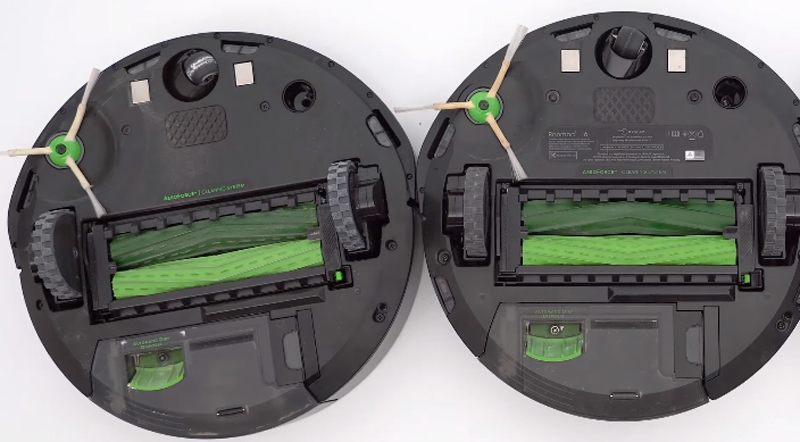
In terms of deep cleaning medium-pile carpets, the Roomba i6+ is more effective than the i3+, with an 85% efficiency rate in getting rid of embedded sand. Under similar conditions, the i3+ shows a slightly lower rate of 80%. Although the 5% difference may seem small, it can make a significant impact in situations that require thorough cleaning. This highlights the superior deep-cleaning ability of the i6+.
Moreover, the Roomba i6+ also stands out with its navigation technology, making a difference in how well it cleans. The i6+ is able to clean more efficiently and thoroughly than the i3+ thanks to its sophisticated navigation system, which optimizes its route and reduces the likelihood of missing any spots.
Pet hair performance
Both models efficiently collect pet hair and adapt to the unique challenges it presents during the cleaning process.
The Roomba i6+ has an edge over its opponent due to its advanced navigation technology and superior cleaning ability. Its mapping and navigation system is sophisticated, allowing it to move through spaces more systematically and ensuring it doesn’t miss any spots where pet hair might accumulate, such as corners and around furniture legs.
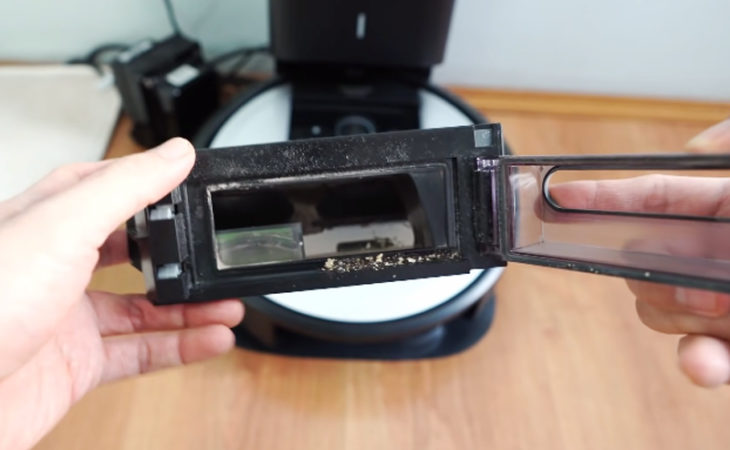
In comparison, while the Roomba i3+ can collect pet hair to a certain extent, it may miss certain areas due to its less advanced navigation system compared to other models. Also, some embedded pet hair may be left behind, especially in carpeted areas, as its cleaning efficiency is slightly lower.
These machines still get tangled with a large volume of pet hair, but their rubber brush roll design allows for quick detangling.
Design & Usability
The winner: Eufy 30C
Dimensions and weight
Both the Roomba i3+ and i6+ maintain compact and convenient dimensions to facilitate easy storage and maneuverability. Their size and low-profile design help them to efficiently maneuver around any stool, chair, or table leg to sweep in and capture nearly all debris. However, if your furniture has a base lower than 3.63 inches, these robots may not fit in and can even get stuck under the furniture.
The Roomba i3+ weighs around 7.44 lbs and has dimensions of 13.26 x 3.63 inches. The i6+ is quite similar in size and weight to the i3+, making both models portable and user-friendly. These similar dimensions and weights ensure that neither model is particularly cumbersome or challenging to accommodate in various household settings.
Battery and charging
These robotic vacuums use lithium-ion batteries known for their durability, consistent performance, and long-lasting power. With a dependable battery system, you can experience fewer interruptions and more efficient cleaning cycles, which is especially important in larger households or areas with high cleaning demands.
Both models offer approximately 75 minutes of usage time per charge, making them suitable for most standard-sized homes or apartments. Compared to other robot vacuums I have reviewed before, this number is not really impressive, but it’s still okay. Once the battery is depleted, it takes only about 2 hours to fully recharge, which is a relatively quick process, ensuring minimal wait time between cleaning sessions.
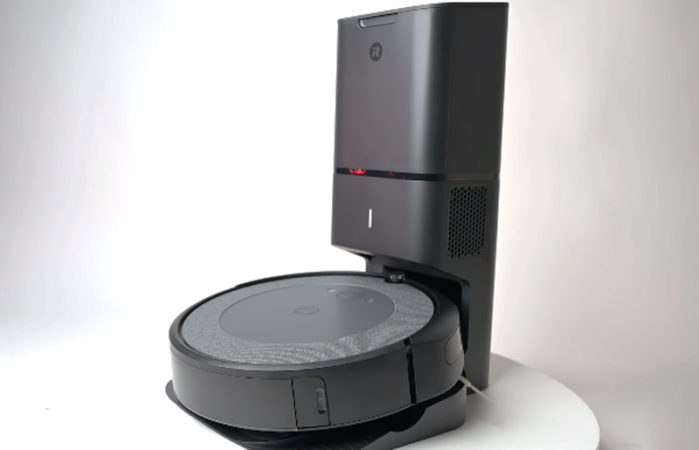
In addition, these robotic vacuums are designed to enhance user convenience and optimize cleaning cycles. Each machine is equipped with an auto-recharge and resume function. This feature allows the vacuum to autonomously return to its charging base when the battery level is low. Once fully charged, it resumes cleaning from where it left off, ensuring a seamless cleaning experience. This minimizes the need for manual intervention and maximizes cleaning efficiency in multiple rooms or large spaces.
Noise
The noise level of the Roomba i3+ ranges from 60 to 64 decibels, which varies depending on the type of flooring it is used on. It is louder on tile or hard floors than on carpets, which significantly absorbs the noise. According to my experience, the brush rolls are the primary source of noise in the i3+, not the suction.
On the other hand, the Roomba i6+ offers a more subtle noise experience during its regular cleaning cycles. For me, this device is not bothersome during daily activities. Its noise level varies around 60 decibels. Sometimes, when I turn the TV up in a room, the robot seems to be almost quiet in another room.
Navigation
Firstly, the i3+ and i6+ both clean in a structured manner, moving in straight lines and rows to ensure a thorough clean. However, their navigation algorithms and technologies differ significantly, which affects their navigational capabilities.
The Roomba i3+ primarily relies on a suite of sensors to navigate through spaces, including a floor tracking sensor, cliff sensors, and bumpers. It lacks advanced navigational aids such as a camera or laser. Therefore, even though the i3+ can efficiently navigate around obstacles and avoid falls. However, its navigation is reactive and responds to obstacles as it encounters them instead of proactively avoiding them based on a pre-defined map of the area.
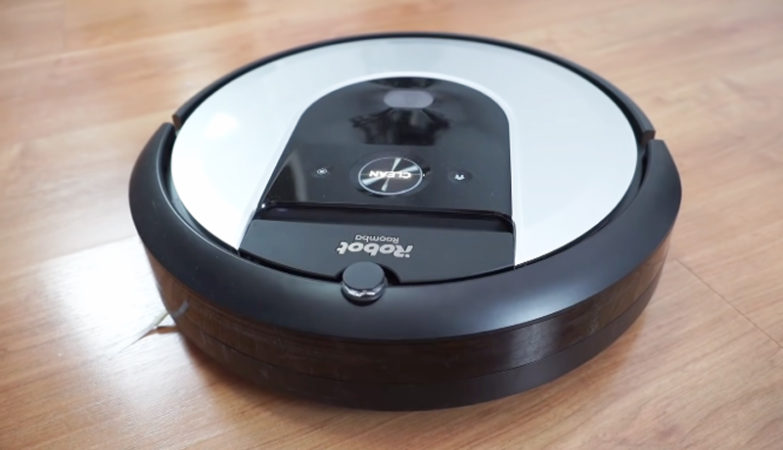
Contrastingly, the Roomba i6+ has advanced navigation technology. It has a camera on top, which helps the robot navigate more accurately and draw and save maps of the cleaning area. This feature allows the i6+ to clean in a more strategic direction, making its route more efficient and reducing the chances of missing spots or collisions. Mapping the environment allows for a smarter approach to navigation and obstacle avoidance.
Control
The winner: Roomba i6+
Control options
These two robots are equipped with physical buttons on their bodies, enabling users to conveniently initiate or terminate cleaning sessions. This offers an easy and accessible method for users to manage the vacuum’s key functions, which is particularly useful for those who may not always have their mobile devices nearby.
Both models come with onboard controls and are also compatible with the iRobot app, which offers more interactive features and user control. The app provides a more comprehensive interface, allowing you to have more nuanced control over the robotic vacuums and their functionalities.
In addition to being convenient, the Roomba i3+ and i6+ also support voice commands through Amazon Alexa and Google Assistant. This allows you to easily control the robots without using physical buttons or the mobile app. This feature is particularly beneficial for those who prefer a more streamlined, hands-free interaction with their devices.
App
Both models are compatible with the iRobot app, but the available features differ significantly, resulting in unique user experiences.
The Roomba i3+ moves efficiently in straight lines and covers areas systematically. It does have a limitation, however, as it cannot save maps or remember landmarks. This means that you cannot customize cleaning preferences for different areas within the app, limiting their control and customization over cleaning sessions.
In contrast, with the Roomba i6+, you can enjoy a personalized cleaning experience using advanced app features. The app allows you to map out the cleaning area, set up keep-out zones, and request selective room cleaning. By doing so, you can avoid specific areas during cleaning and pinpoint the exact locations or rooms you want to be cleaned at particular times.
Cleaning & Maintenance
Tie
When assessing the cleaning and maintenance aspects of the Roomba i3+ and i6+, it’s essential to observe their practical utility in daily use. Both models are equipped with a 500-ml dustbin, accommodating a substantial amount of dirt and debris, reducing the frequency with which users need to empty the bin manually. I think the dustbin capacity doesn’t matter since both of them also come with a Clean Base® Automatic Dirt Disposal system.
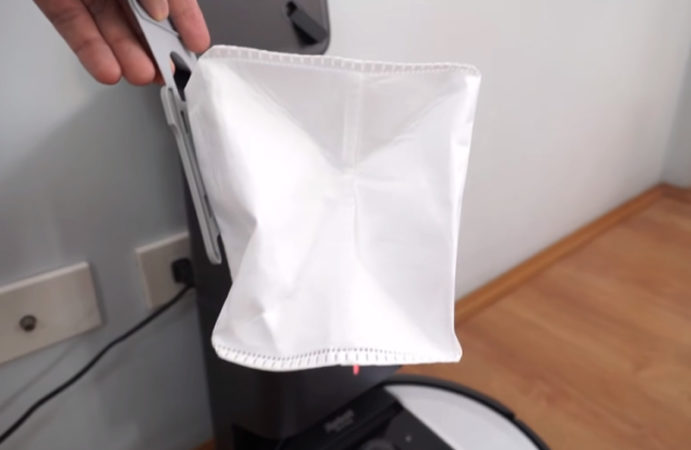
This advanced feature allows the robots to automatically empty their dustbins into the Clean Base® after each cleaning session, which can hold dirt and debris for up to 30 cleaning sessions, further minimizing the need for regular manual emptying. Thus, you can reduce the maintenance effort and maximize convenience and efficiency.
In my tests, their dustbins fill up fairly quickly, but then they automatically go back to their base to empty. The base has a vacuum cleaner bag in it, which can hold up to 2.65 L of debris.
Quick Rundown Of Roomba i6+
- ABILITY TO GET SMARTER - Quality that lasts; Intelligence that grows; Equipped with advanced hardware capable of providing the intelligent features you love today, and access to our latest advancements in the future
- LEARNS YOUR LIFE LISTENS TO YOUR VOICE - Learns your cleaning habits to offer up personalized schedules, while Google Assistant and Alexa allow you to start cleaning with just the sound of your voice
- PICKS UP RIGHT WHERE IT LEFT OFF - Doesn t skip a beat, or a mess; When its running low on battery it recharges and resumes, ensuring a complete clean
- GUIDED BY SERIOUS SMARTS - Intelligently maps and cleans an entire level of your home; Patented iAdapt technology with vSLAM navigation actively captures thousands of precise measurements each millisecond to optimize coverage
Quick Rundown Of Roomba i3+
- PERFORMANCE: The iRobot Roomba i3 plus (3550) Wi-Fi Connected Robot Vacuum pulls in stubborn dirt with a Premium 3-Stage Cleaning System and 10X the Power-Lifting Suction. Control how you clean with the iRobot Home app or your voice assistant
- AUTOMATIC DIRT DISPOSAL: Forget about vacuuming for months at a time with the Clean Base Automatic Dirt Disposal that allows the i3 plus to empty itself for up to 60 days.
- APP: The newly updated iRobot Home App allows you to upgrade your overall cleaning experience. Enjoy features that work around your life, including personalized scheduling suggestions and seasonal recommendations, all tailored to your unique needs
- VOICE ASSISTANCE: The Robot Vacuum learns your cleaning habits to offer up personalized schedules, while Google Assistant and Alexa allow you to start cleaning with just the sound of your voice. The i3 will even suggest an extra clean when your area’s pollen count is high or during pet shedding season
- TECHNOLOGY: Patented Dirt Detect Technology helps your robot find the dirtier areas in your home, like high-traffic spots, and cleans them more thoroughly
Product Videos
Related Articles to Roomba I3 Plus
- Roomba i3+ vs i4+: Reveal The Better iRobot’s Entry-Level Robot Vacuum
- Roomba J7+ Vs I3+: Which Self-Emptying Robot Is Better?
- Roomba I3+ Vs I8+: How To Choose The Best Self-Emptying Robot?
- Roomba I3+ Vs I7+: What Is The Best Option For Your Home?
References:
- Roomba i6+: https://www.irobot.com/en_US/wi-fi-connected-roomba-i6plus-self-emptying-robot-vacuum/I655020.html
- Roomba i3+: https://www.irobot.com/en_US/roomba-i3-evo-robot-vacuum/I315020.html

Richard B. Schmidt is a prominent figure in the vacuum cleaner industry, boasting over 15 years of expertise. Armed with a Robotics Engineering degree from Northeastern University and a Master’s in Consumer Science from Harvard, his unique blend of technical knowledge and consumer insights positions him as a sought-after authority in vacuum cleaner evaluation. Richard’s career began at Dyson, where he contributed to the development of innovative vacuum models. Transitioning to advocacy and reviews, he co-founded the first Vacuum-focused blog in 2008, offering comprehensive analysis and user guides for various vacuum cleaners. In 2020, he founded RoboMop.net, providing ongoing insights through columns and buyer’s guides.
